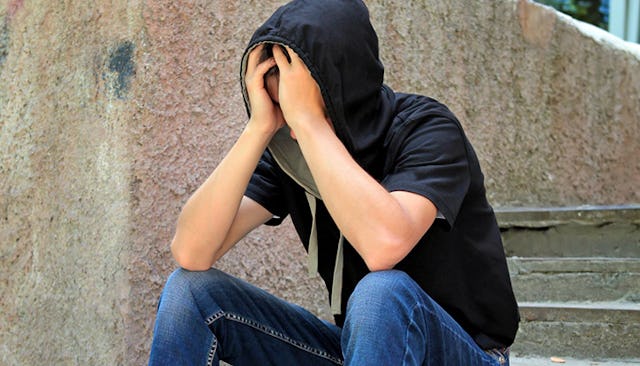AAP Is Now Urging Pediatricians To Screen Teens For Suicide Risks

Suicide is now the second-leading cause of death among teens
As teen suicides increase in the U.S. doctors are being urged to screen their adolescent patients for risks. The American Academy of Pediatrics released guidelines for doctors this week in an attempt to identify and help teens who might be feeling suicidal.
The last report of its kind was released in 2007, and at the time suicide was the third-leading cause of death. Since then, suicides have moved past homicide rates for people aged 15 to 19, the organization of medical professionals said. Unintentional injuries – which include a variety of things like car crashes and inadvertent poisonings – are the only things that take the lives of more teens than suicide.
Common risk factors include:
family history of suicide
a history of physical or sexual abuse a history of mood disorders a history of drug and alcohol use lesbian, gay, bisexual or questioning sexual orientation transgender identification
The healthcare experts also listed bullying and pathological internet use as possible risk factors. “Bullying has always been a major issue for adolescents, but there is now greater recognition of the connection between bullying and suicide,” AAP report’s lead author, Benjamin Shain, MD, Ph.D. shared in the paper.
In January, 16-year-old David Molak of San Antonio, Texas took his life because of relentless bullying from his classmates. In March, an 8-year-old was put on suicide watch after admitting that the cruel bullying he experienced made him want to kill himself. “The Internet is a key influence, as well. Cyberbullying, for example, is as serious a problem as face-to-face bullying,” said Shain, who is also a child psychiatrist with NorthShore University HealthSystem.
It’s unclear how much cyberbullying affects suicide rates, but doctors do know that using the internet more than 5 hours a day is linked to higher levels of depression and suicidal thoughts among teens. “The internet can have a magnifying effect on bullying because the adolescent’s humiliation is public and he or she feels helpless to stop it from continuing,” Dewey Cornell, clinical psychologist, and director of the Virginia Youth Violence Project told USA Today. “It is bad enough to be teased and rejected by a few classmates, but far worse when it is visible to all of your friends and potentially everyone in the world.”
The internet, social media, and texting can play a positive role in the lives of teens who are struggling with suicidal thoughts in the form of support groups and crisis lines. Like the Crisis Text line, which was created with teens in mind, and offers free, anonymous help from counselors. “People generally keep their inner experiences of stress and negative thinking close and hidden very tightly,” Christine Moutier of the American Foundation for Suicide Prevention, told USA Today. “And that’s the reason this article helping pediatricians notice those signs, listen to parents, and ask the right questions invitingly is so important because they will be able to help.”
If you need to talk to someone or are experiencing suicidal thoughts, text Crisis Text Line at 741-741 or call the National Suicide Prevention Lifeline at 1-800-273-8255.